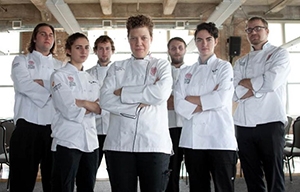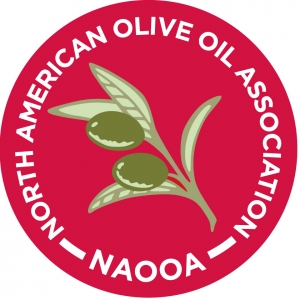

Kendall College Wins 2015 National Baron H. Galand Culinary Knowledge Bowl
A team of five students enrolled in the Kendall College School of Culinary Arts’ associate and baccalaureate programs on beat three other teams to win the 2015 National Baron H. Galand Culinary Knowledge Bowl on Aug. 1 at the American Culinary Federation’s (ACF) National Convention & Show at the Orlando (Fla.) World Center Marriott.
Their success reclaims the title and is the third win for a Kendall College team in the last six years of this national competition. Earlier this year in Indianapolis, the Kendall team swept the annual regional competition for a sixth consecutive year to qualify for the national final.
The Kendall College team, consisting of Alex Gabrielson (captain; Pella, Iowa), Michael Lanzerotte (Bloomington, Ill.), Emily Mankus (Lincolnshire, Ill.), Nelia Salvi (Madison, Wis.) and Alex Szabo (Prescott, Ariz.), competed against student teams from professional foodservice-training programs at schools in Riverhead, N.Y., Savannah, Ga., and Kirkland, Wash., representing the ACF’s Northeast, Southeast and Western Regions, respectively. Culinary student Mike Kubiesa (Elmhurst, Ill.) served as a second alternate on Kendall’s team.

Educators Invited to Inaugural Olive Oil Conference in Chicago
The North American Olive Oil Association(NAOOA), a nonprofit group that promotes the health, versatility and authenticity of all types of olive oil for North American consumers, announces registration is open for its Inaugural Olive Oil Conference—“Spend Wisely on Olive Oil”—to be held Aug. 25 and 26 at the Westin O’Hare near Chicago in Rosemont, Ill.

CIA Names New Managing Director for San Antonio Campus
Food and beverage executive Fernando Salazar was named the new managing director of The Culinary Institute of America (CIA), San Antonio, effective June 1. He replaced David Kellaway, CMC, managing director for the past five years, who relocated to Colorado.
Salazar has been involved with the CIA for several years, serving on the executive committee of the college’s Latin Cuisines Advisory Council and presenting at several of its thought-leadership conferences. He was commencement speaker at the CIA's New York campus in 2010.
Salazar comes to the CIA from Wyndham Hotels and Resorts where, since 2007, he was vice president for food and beverage and vice president of operations for Latin America. From 1996 to 2007, he held several management positions with Omni Hotels and Resorts, including director of operations for the Omni Colonnade in San Antonio and vice president for food and beverage for the entire company.
His career in food and beverage management began in 1975 as restaurant manager with Helmsley Hotels at the St. Moritz in New York City, and continued with more than a decade at Westin Hotels.
